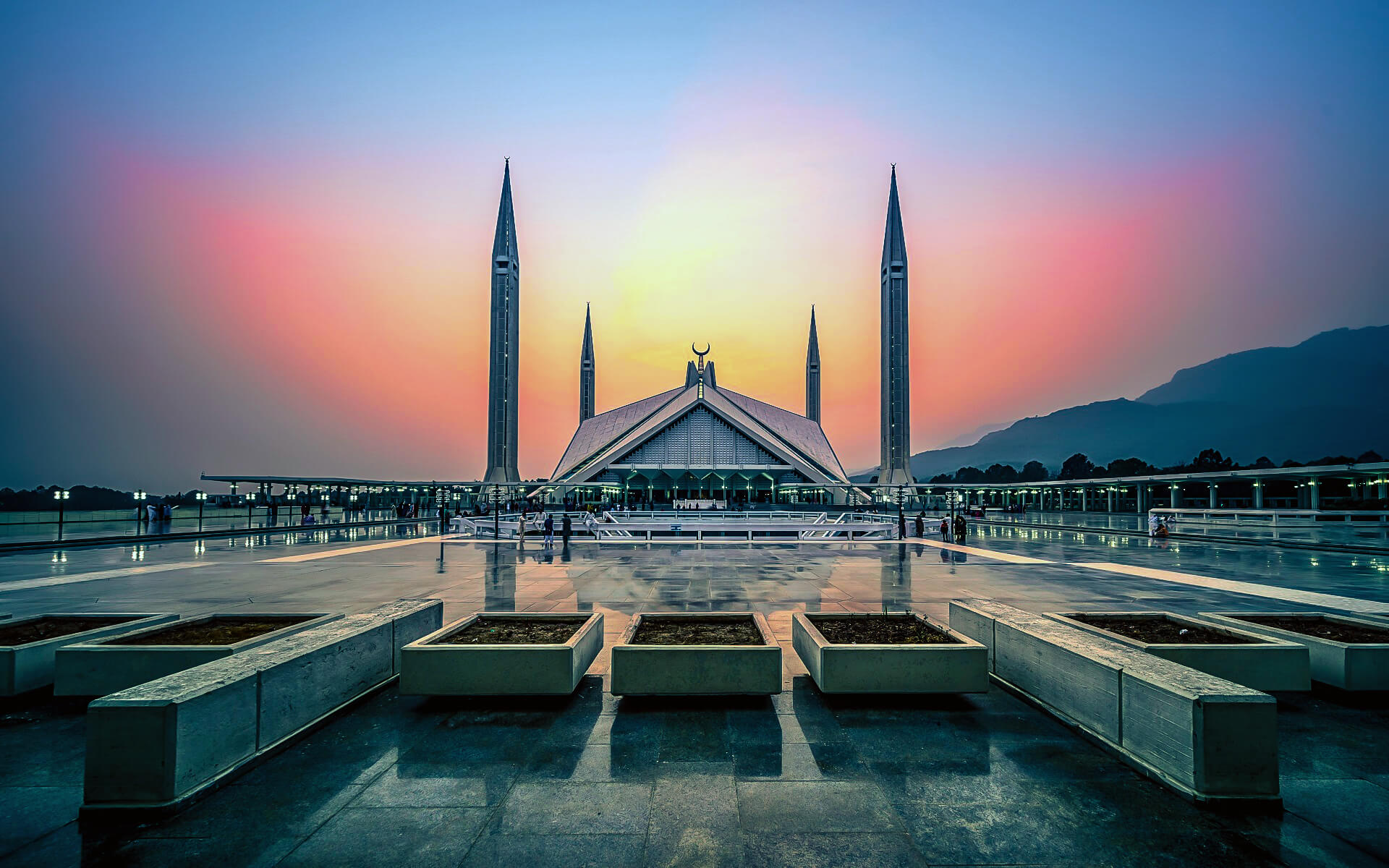Islamabad is a relatively calm metropolis with a total size of 1,165.5 km2 (450 mi2), of which 906 km2 (349.8 mi2) is Islamabad proper. Visitors may be particularly interested in the Federal Government offices, Parliament House, and the official homes of the President and Prime Minister, as well as the Diplomatic Enclave – an area next to Parliament House devoted to foreign embassies and missions assigned to Pakistan.
Although the bulk of the population in Islamabad has historically been Federal Government workers, the riches of the Musharraf years has spurred a boom in Islamabad, and it is quickly becoming an important financial and economic center. The city’s traditional image has changed dramatically in the previous decade. Islamabad, which used to be a regular 9 to 5 metropolis, has grown more vibrant, with numerous new restaurants and hotels rising up to serve this new riches. Many foreign restaurant franchises have opened, and there has been a general increase in nightlife, with more commercial districts staying up late. However, after dark in the winter, the streets are noticeably quieter.
Even today, Islamabad attracts visitors from all across the nation who come to appreciate the city’s tranquil, noise-free ambiance, abundant vegetation, and beautiful surroundings. It also acts as a base camp for travelers traveling from the south and coastal places such as Karachi to comparatively lush valleys such as Swat and Kaghan, as well as northern locations such as Gilgit, Hunza, Skardu, and Chitral in the Himalayas ranges.
Islamabad has five main zones: Zone 1, Zone 2, Zone 3, Zone 4, and Zone 5. Zone 4 is the biggest in terms of land area. Zone 3 is mostly made up of the Margalla Hills and the Margalla Hills National Park. This zone also includes Rawal Lake. Zones 4 and 5 include Islamabad Park and the city’s rural districts. Zone 1 includes mostly of established residential sectors, whilst Zone 2 consists primarily of underdeveloped residential sectors. Each residential sector is recognized by an alphabet letter and a number, and it spans an area of around 2 km 2 km. Each sector is lettered from A to I, and each sector is subdivided into four numbered sub-sectors.
Visitors will quickly observe that Islamabad is built out on a grid pattern, with sector names based on the following scheme:
Diplomats are designated by the D sector, Elites by the E sector, Forces by the F sector, General by the G sector, Health and Education by the H sector, and Industry by the I sector.
The oldest sectors are E7, F6, F7, G6, G7, whereas F8, F10, F11, G10, G11, and I8 are where the ‘new money’ has been put.
Military housing complexes occupy E8, E9, making them virtually off-limits to travelers. G7, G8, and G9 are impoverished neighborhoods where city planners wanted cleaners and office clerks to dwell. However, they are often the city’s only culturally diverse districts. Instead of an Islamabadi, you’d find a regular Pakistani here.
The H and I sectors are a mishmash of residential, academic, and industrial regions. E11, E12, and even D12 are now under development, and a G13 is also being created. The majority of the activity takes place in F6 and F7, but the presence of embassies and influential Pakistanis in these locations also means a lot of security, concrete barricades, and raise arm barrier gates, which are thankfully missing elsewhere.
F6 and F7 may be your best choice for a guest home since they are normally luxury districts with all the essential utilities nearby.


